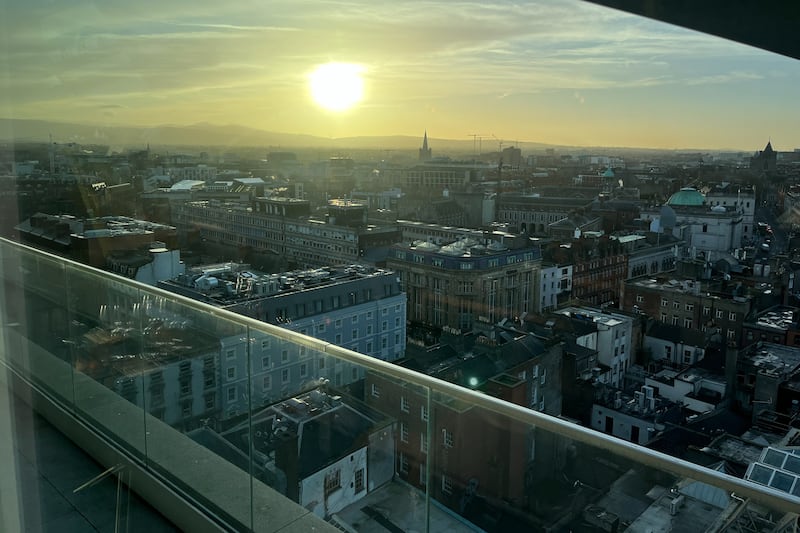On a rare Dart trip into darkest south County Dublin recently, I found myself sitting opposite a jockey-sized young man whose journey, by comparison with mine, was epic.
According to his account, which emerged in snippets of conversation, usually initiated by him, the adventure had started the previous day in Waterford.
He was supposed to be attending a party in Carlow but had fallen asleep on the bus and ended up in Dublin, from which he was now trying to get back to Waterford, via Wexford, where a lift awaited. Although he was heading in the right direction, at least, there seemed to be a gap in his travel plans south of Bray.
Worryingly, his only luggage was an e-scooter which, even for a jockey, seemed unlikely to get him to Wexford. But no. His intention was to catch a bus after the Dart. Would that be possible, he wondered?
Frank McNally on 19th century engineering project that linked Tipperary with ‘civilisation’
A Passage to Innocence – Frank McNally on an anthology of old school routes remembered
Craicing the Case – Frank McNally on the origins of a cultural and linguistic phenomenon
Frank McNally on a grand stretch in the evenings, a new Dublin restaurant and ‘Gloomsday’
My companion and I checked our phones – he didn’t have one, an extraordinary thing in itself these days – and confirmed that yes, he could get a local bus from Bray to the motorway and from there one of the longer-distance services south.
When I asked if he’d brought the e-scooter on the bus up, and why, he seemed to indicate he hadn’t but added, with a logic apparent only to him: “I was out on the beer last night.” It was as if an e-scooter was something you might wake up alongside, with the hangover. In any case, he was clearly travelling on a tight budget now, so we awaited his formal application for a loan at some point.
But the nearest thing he got to asking for money was an inquiry about whether we could exchange him “two fivers for a tenner”. We couldn’t. And besides, the fivers were a red herring. What he needed, obviously, was a new tenner. The one he was holding up had a corner missing.
That was why he was on the Dart (without a ticket, presumably): because the person or machine in Busáras wouldn’t accept the note. He was hoping for better luck in Wicklow.
Nothing about his version of events quite added up, including an interlude in which he inquired with sudden concern about a possible hole in the back of his T-shirt. There was indeed a hole, but only a tiny one. It was hardly a cause for worry and certainly much smaller than the holes in his story.
Still, before getting off at Sandycove, I gave him €20, in case his dodgy tenner wasn’t legal tender in Wicklow either. His was the lamest pitch for money I’d heard in years. And yet it worked. I wondered if he does this every day.
Scooter boy from earlier was a latter-day Ulysses: making his way home from the Trojan War via a series of improbable adventures, including shipwreck and siren-induced sleeping sickness
We were visiting the Martello Tower in Sandycove, a place I had somehow never been inside before, maybe because it was always closed – or on Bloomsdays, too crowded – on previous trips.
It was fascinating to finally see the inside of a place where one of the great works of literature begins, with exhibits now including an ornamental version of the mythical black panther that nearly got James Joyce shot during his short but famous stay there.
Only later, back on the Dart, did it strike me that the scooter boy from earlier was a latter-day Ulysses: making his way home from the Trojan War via a series of improbable adventures, including shipwreck, siren-induced sleeping sickness, and a one-eyed ticket machine. No doubt the Greek hero had holes in his T-shirt too.
By pure coincidence, or possibly an impure one, I have since been reading a memoir in which the Martello Tower features as a small but extraordinary subplot.
The writer is Herbie Brennan, veteran journalist, author and self-described “magician”. His life has oddly straddled the sceptical, even cynical, world of newspaper/magazine production on the one hand, and occult studies – with which he has been fascinated since childhood – on the other.
For the most part, the subjects did not collide. But then there was the time, in the late 1960s, when he was editing a Dublin-based magazine called Scene. In one of the management’s occasional attempts to woo – or wow – advertisers, it was decided to host a party in some suitably unusual venue.
It turned out the Martello Tower was available for a price, provided there were precautions to protect the Joycean exhibits and that, given the tower’s natural hazards as a party venue, numbers were limited. A cap of 11 guests was imposed, Brennan recalls. They invited 48.
One further invitee was considered. At a meeting beforehand, the magazine’s northern owner asked the editor about his experiments with spiritualism. “I’ve been to a few seances,” Brennan admitted.
Whereupon the owner offered him a fee of “£500, tax-free, to raise the ghost of James Joyce” during the party. Attractive as the offer was, Brennan declined. The event passed pleasantly but Joyce was not among the official attendance.














